What is an AI Robot? Definition and Basic Concepts
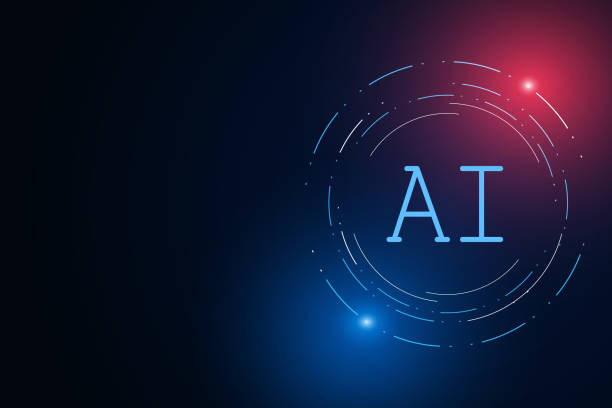
Today, the term #Artificial_Intelligence (Artificial Intelligence) is frequently heard, but a deep understanding of it remains ambiguous for many people.
In short, an Artificial Intelligence (AI) robot is a computer system or machine designed to perform tasks that typically require human intelligence.
These tasks can include learning, reasoning, problem-solving, understanding natural language, and pattern recognition.
An AI robot analyzes data using complex algorithms and models and makes decisions based on them.
For example, an AI robot can be used for fraud detection in financial transactions, suggesting products to customers in an online store, or even driving a car.
The use of AI robots in various fields leads to increased efficiency, reduced errors, and improved decision-making.
This technology is evolving, and we see new applications of it every day.
In fact, the AI robot is not only a powerful tool but also a driving force for innovation and progress in various industries.
Tired of your e-commerce website not generating as much revenue as it could? Rasaweb, a specialist in professional e-commerce website design, solves this problem permanently!
✅ Increase sales rate and revenue
✅ High loading speed and exceptional user experience
⚡ Get free consultation for e-commerce website design
A Brief History of Smart Robots and Their Evolution

The evolution of AI robots is a fascinating story full of ups and downs.
The idea of building machines that can think and act dates back to ancient times, but the first serious steps in this field were taken in the 20th century.
In the 1950s and 1960s, pioneering researchers in artificial intelligence, such as Alan Turing (Alan Turing), laid the theoretical foundations of this science and developed early algorithms for machine learning.
However, progress during that era was limited because the computational power of computers was insufficient.
In subsequent decades, with increased processing power and the development of new algorithms, we witnessed significant advances in artificial intelligence.
Deep Learning (Deep Learning), one of the most important achievements of this era, enabled the creation of more complex and accurate models.
Today, AI robots are used in many industries and fields and play a significant role in our daily lives.
This evolution continues, and we expect to see even more remarkable developments in this field in the near future.
These advancements not only lead to improved efficiency and reduced costs but also enable the solution of complex problems and access to more accurate information.
Main Components of an AI Robot – Hardware and Software
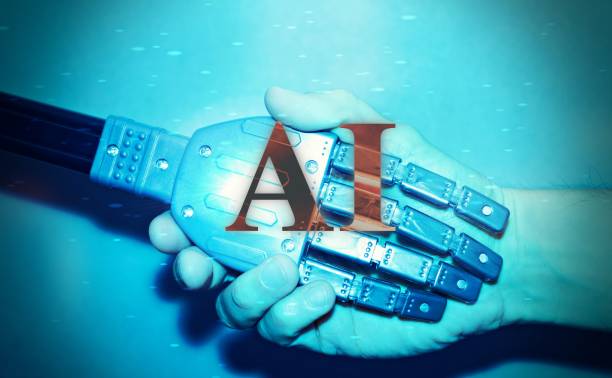
An AI robot consists of two main parts: hardware and software.
Hardware includes the physical components of the robot, such as sensors, processors, motors, and communication devices.
Sensors collect information from the environment, and processors process this information to make decisions.
Motors are used for movement and performing physical tasks, and communication devices allow the robot to interact with the outside world.
Software includes algorithms, models, and computer programs that enable the robot to think, learn, and act.
Machine Learning (Machine Learning) algorithms enable the robot to learn from data and improve its performance.
Artificial intelligence models, such as Neural Networks (Neural Networks), enable the robot to recognize patterns and make decisions.
The interaction between hardware and software is key to the proper functioning of an AI robot.
Without appropriate hardware, the robot cannot collect information or perform physical tasks.
Without appropriate software, the robot cannot process information or make decisions.
The integration of these two components enables the AI robot to operate effectively in the real world.
| Hardware Components | Functions |
|---|---|
| Sensors | Collecting information from the environment |
| Processors | Processing information and decision-making |
| Motors | Movement and performing physical tasks |
| Communication Devices | Communicating with the outside world |
| Software Components | Functions |
|---|---|
| Machine Learning Algorithms | Learning from data and improving performance |
| Artificial Intelligence Models | Pattern recognition and decision-making |
| Computer Programs | Controlling and coordinating robot components |
Diverse Applications of AI Robots in Various Industries
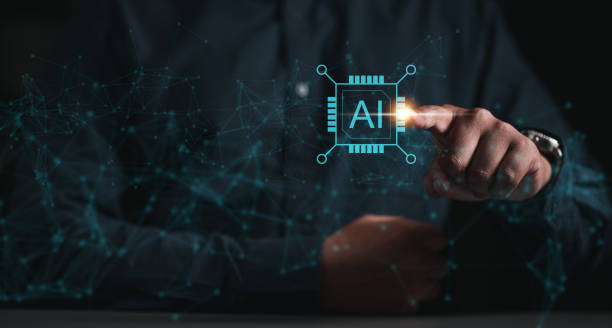
The applications of AI robots are very extensive and diverse, and their traces can be found in almost all industries and fields.
In the manufacturing industry, AI robots are used for automating production lines, quality control, and process optimization.
In the healthcare industry, these robots are used for diagnosing diseases, providing medical services, and patient care.
In the financial industry, AI robots are used for fraud detection, risk management, and providing advisory services to customers.
In the transportation industry, these robots are used for self-driving cars, route optimization, and fleet management.
Furthermore, AI robots have numerous applications in other areas such as education, security, agriculture, and customer services.
In summary, this technology is considered a powerful tool for solving complex problems, increasing efficiency, and improving the quality of human life.
Given the rapid advancements in artificial intelligence, it is expected that the applications of this technology will become more widespread and diverse in the future.
This expansion not only helps improve the performance of various industries but also creates new opportunities for innovation and development.
Tired of losing business opportunities due to not having a professional corporate website? Don’t worry anymore! With Rasaweb’s corporate website design services:
✅ Your brand’s credibility and professionalism will increase.
✅ You will attract more customers and sales leads.
⚡ Get a free consultation now to get started!
Advantages and Disadvantages of Using Smart Robots
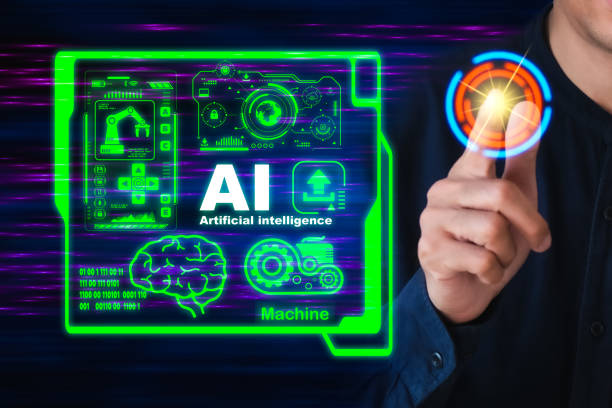
The use of AI robots has its own advantages and disadvantages.
Advantages include increased efficiency, reduced errors, improved decision-making, cost reduction, and performing dangerous tasks.
AI robots can work continuously and tirelessly, performing tasks that are difficult or dangerous for humans.
Additionally, these robots can analyze data with high speed and accuracy, making better decisions.
On the other hand, the use of AI robots also has disadvantages, such as high implementation costs, the need for technical expertise, ethical concerns, and the potential loss of jobs for some individuals.
Furthermore, these robots may not perform well in unexpected or complex situations and may require human supervision and intervention.
Moreover, the use of AI robots can lead to concerns about data privacy and security.
Therefore, before implementing an AI robot system, its advantages and disadvantages must be carefully evaluated, and appropriate solutions to mitigate disadvantages and enhance advantages should be considered.
Different Types of AI Robots Based on Application and Level of Intelligence
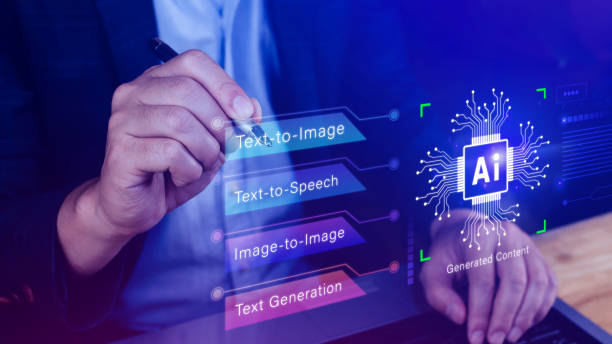
AI robots can be categorized into different types based on their application and level of intelligence.
In terms of application, AI robots can be divided into industrial robots, service robots, medical robots, military robots, and personal robots.
Industrial robots are used for automating production processes and performing repetitive tasks.
Service robots are used to provide customer services, such as answering questions and offering guidance.
Medical robots are used for performing surgeries, diagnosing diseases, and patient care.
Military robots are employed for reconnaissance, surveillance, and attack missions.
Personal robots are used to assist individuals with daily tasks, such as house cleaning and shopping.
In terms of intelligence level, AI robots can be categorized into reactive robots, limited memory robots, theory of mind robots, and self-aware robots.
Reactive robots only respond to external stimuli and have no memory.
Limited memory robots can store a limited amount of information and use it for decision-making.
Theory of mind robots can understand what others are thinking and feeling.
Self-aware robots possess self-awareness and can think about themselves.
Currently, most AI robots are at the reactive or limited memory level, but research continues to build smarter and more self-aware robots.
The Future of AI Robots – Predictions and Potential Trends
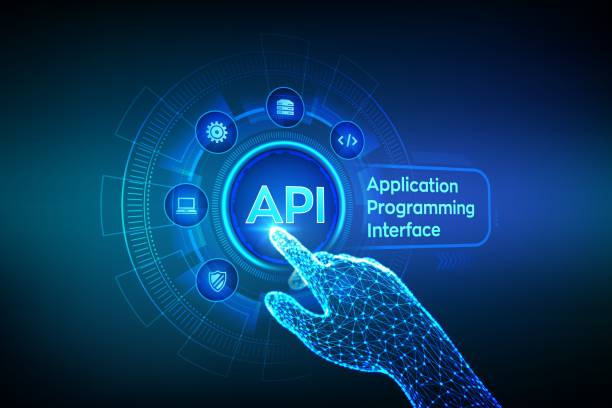
The future of AI robots is very bright and full of potential.
With rapid advancements in artificial intelligence, AI robots are expected to play a much more significant role in our lives in the near future.
Some predictions suggest that AI robots could replace many human jobs in the future, but this issue is still under discussion and scrutiny.
Potential future trends for AI robots include increased intelligence levels, improved learning capabilities, development of more advanced sensors, enhanced human-robot collaboration, and the development of self-aware robots.
Furthermore, AI robots are expected to find applications in new areas such as space, oceans, and hazardous environments in the future.
However, the development of AI robots also comes with challenges, such as ethical concerns, security issues, and the need for appropriate laws and regulations.
Therefore, to fully harness the potential of AI robots, these challenges must be accurately identified, and appropriate solutions to address them should be considered.
| Trend | Description |
|---|---|
| Increased Intelligence Level | AI robots will be capable of performing more complex tasks and making better decisions. |
| Improved Learning Capability | AI robots will be capable of learning faster and more effectively from data. |
| Development of More Advanced Sensors | AI robots will be capable of better understanding their surrounding environment. |
| Enhanced Human-Robot Collaboration | AI robots will be capable of collaborating more effectively with humans in performing tasks. |
| Challenge | Description |
|---|---|
| Ethical Concerns | Complex ethical decision-making by AI robots. |
| Security Issues | Preventing misuse and hacking of AI robots. |
| Need for Laws and Regulations | Regulating the use of AI robots to prevent potential harm. |
Ethical and Social Challenges Related to Smart Robots

The development and use of AI robots bring numerous ethical and social challenges.
One of the most important of these challenges is the issue of accountability.
If an AI robot makes a mistake or causes harm, who will be responsible? The robot’s manufacturer, the robot’s user, or the robot itself? This question still lacks a definitive answer and requires further investigation.
Another challenge is the issue of privacy.
AI robots can collect and process large amounts of personal information, which can lead to privacy breaches.
Furthermore, the use of AI robots can lead to job losses for some individuals, which can have negative social consequences.
Moreover, the use of AI robots can lead to discrimination, for instance, if an AI robot is trained on incomplete or biased data, it might make decisions that favor one specific group and disadvantage another.
Therefore, for responsible use of AI robots, these ethical and social challenges must be seriously considered, and appropriate solutions to address them should be taken into account.
These solutions can include developing appropriate laws and regulations, educating and raising public awareness, and developing more ethical and reliable technologies.
Research shows that 80% of customers trust companies with professional websites more. Does your current website inspire this trust?
With Rasaweb’s corporate website design services, solve the problem of lack of customer trust and a weak online image forever!
✅ Create a professional image and increase customer trust
✅ Attract more sales leads and grow your business
⚡ Get a free consultation
Important Points in Choosing and Using an AI Robot
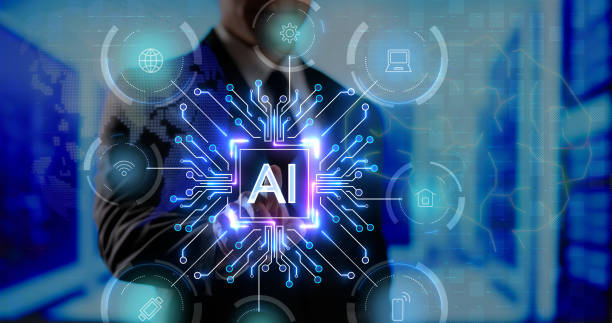
Choosing and using an AI robot requires careful attention to important points.
First and foremost, you must accurately define your needs and goals.
What tasks do you want to assign to the AI robot? What are your expectations for its performance? After defining your needs, you should research and find the appropriate AI robot for your requirements.
Pay attention to the capabilities, features, price, and technical support of the AI robot.
Also, read reviews and experiences of other users.
After selecting the AI robot, you must install and configure it correctly.
Follow the manufacturer’s instructions carefully and seek assistance from technical experts.
After installation and configuration, you must regularly test and evaluate the AI robot.
Check its performance and adjust its settings if necessary.
Furthermore, you should regularly update the AI robot’s software to benefit from the latest features and security patches.
Finally, you should remember that an AI robot is a tool and should not be viewed as a magical solution.
To effectively use an AI robot, you must interact with it correctly and use it alongside other tools and methods.
How to Build an AI Robot? Introducing Tools and Construction Steps

Building an AI robot can be an exciting and challenging project.
To begin, you should be familiar with the basic concepts of artificial intelligence and programming.
Also, you need to acquire the necessary tools and resources.
Necessary tools include programming languages such as Python (Python), AI libraries like TensorFlow and PyTorch, and suitable hardware such as sensors and processors.
The steps to build an AI robot typically include data collection, training the AI model, implementing the model in hardware, and testing and evaluating the robot’s performance.
For data collection, you can use various sources such as the internet, databases, and sensors.
For training the AI model, you can use machine learning algorithms and neural networks.
To implement the model in hardware, you need to convert the model into code and run it on the robot’s processor.
To test and evaluate the robot’s performance, you should test it under various conditions and compare its performance against predefined criteria.
Building an AI robot requires patience, perseverance, and technical knowledge, but with effort and practice, you can build a smart and efficient robot.
Frequently Asked Questions
| Question | Answer |
|---|---|
| What is an AI robot? | It is a robot that uses artificial intelligence capabilities for environmental understanding, reasoning, learning, and decision-making to perform complex tasks autonomously. |
| What is the main difference between a regular robot and an AI robot? | AI robots can learn and adapt to their environment, whereas regular robots typically operate based on fixed, predefined programming. |
| In what fields are AI robots used? | In fields such as industry (production lines), medicine (robotic surgeries), services (customer support, smart vacuum cleaners), exploration (space and underwater), and entertainment. |
| How do AI robots learn? | They acquire new skills through Machine Learning and Deep Learning algorithms, by analyzing large data sets and identifying patterns. |
| Can AI robots have emotions? | Currently, no. They can identify or simulate emotions, but they do not genuinely experience emotions like humans. |
| What are the most important advantages of using AI robots? | Increased productivity, reduced human error, performing dangerous or repetitive tasks, and providing innovative and efficient services. |
| What challenges exist in the development of AI robots? | The need for abundant and high-quality data, complexity of algorithms, ethical issues, cybersecurity, and high research and development costs. |
| Are AI robots dangerous for humans? | With adherence to safe design principles and ethical regulations, no. Concerns are mostly related to social and economic impacts such as changes in the job market. |
| What is an example of an AI robot in daily life? | Smart vacuum cleaner robots (like Roomba) that automatically map and clean homes, or smart voice assistants (like Siri and Alexa). |
| How is the future of AI robots predicted? | They are expected to become smarter, more autonomous, and capable of more complex interactions with humans, playing a more prominent role in industry, medicine, transportation, and daily life. |
And other advertising agency services by Rasaweb in the field of advertising
- Smart Content Strategy: A combination of creativity and technology to increase click-through rates using an SEO-focused content strategy.
- Smart Advertorials: An effective tool for campaign management with the help of an SEO-focused content strategy.
- Smart Website Development: A professional solution for online growth with a focus on an SEO-focused content strategy.
- Smart Content Strategy: A professional solution for increasing sales with a focus on an SEO-focused content strategy.
- Smart UI/UX: A creative platform for improving campaign management with precise audience targeting.
And over a hundred other services in the field of internet advertising, advertising consultation, and organizational solutions
Internet Advertising | Advertising Strategy | Advertorials
Sources
The Future of Robotics and Artificial Intelligence in Iran
Advantages and Disadvantages of AI Systems
Recent Innovations in Iran’s Artificial Intelligence Sector
Ethical Challenges of Artificial Intelligence Development
? To shine in the online space, you need a reliable partner. Rasaweb Afarin, a leading digital marketing agency, paves your path to digital success by providing comprehensive services including SEO, smart advertising, and personal website design. Contact us today and transform the future of your business!
📍 Tehran, Mirdamad Street, next to Bank Markazi, Kazeroon Jonubi Alley, Ramin Alley No. 6

